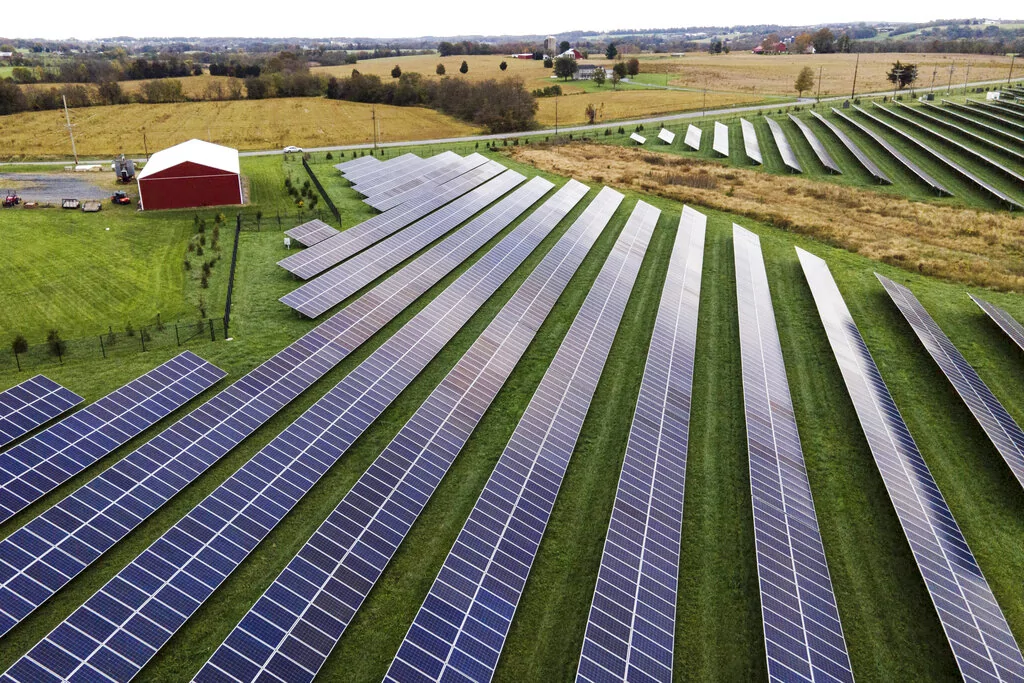Farmers boost their profits by bringing sheep and solar farms together
September 24, 2024

As solar companies seek more land to install solar panel farms and farmers see decreasing profits, a symbiotic relationship has formed in farmlands all across the country.
Known as agrivoltaics, it is the practice in which agricultural production (whether livestock, crops, or supporting pollination) occurs in the same space where solar panels capture energy.
The concept has existed since the 1980s, but it’s really picked up steam in recent years as higher institutions such as Cornell University and the University of Massachusetts Amherst conduct research.
The Energy Department has its own initiative, the InSPIRE program, which is overseeing 22 project sites in the United States.
Just this year, the department launched the Large Animal and Solar System Operations Prize valued at $8 million. It gives academic institutions, tribes, and nonprofit organizations the chance to develop and research the partnership created between solar panel farms and livestock farmers.
The push for agrivoltaics comes as the Energy Department seeks to decarbonize the electricity grid by 2050. With that goal comes the need to build more solar panels, and to do so, developers would need to build ground-based solar stretching across 0.5% of the land in the United States.
The Energy Department and solar power companies are especially interested in building on farmlands because the conditions necessary for crops to grow — low winds, moderate temperatures, plenty of solar radiation, and low humidity — are the same conditions that yield the highest solar power production.
Researchers have found that barren land isn’t as optimal for harnessing solar power energy as cropland and grassland.
Farmers, meanwhile, are expected to see their net farm income this year 40% down from 2022.
“Farm finances will almost certainly weaken in 2024 and 2025, based on high credit costs, rising land costs and falling commodity prices,” American Farm Bureau Foundation economist Samantha Ayoub told Michigan Farm News.
Farmers can enter an agreement with solar power companies to lease their farmland to help manage volatile crop and meat prices.
Solar grazing is the most popular arrangement in agrivoltaics, accounting for 200 grazing sites across 50,000 acres of land, Jordan Macknick, head energy-water-land analyst for the National Renewable Energy Laboratory, told the Washington Post. It’s expected to reach $9.3 billion by 2031.
When solar power companies are leasing land from farmers raising sheep, they can just rely on the animals to maintain the vegetation. There is no need to use emission-producing mowers or toxic herbicides.
“No one loses in this arrangement,” Charles Gould, author at Michigan State University Extension, wrote. “The solar developer gets excellent vegetation management from the farmer and the public benefits from electricity production and preservation of land in cropping or grazing systems.”
CLICK HERE TO READ MORE FROM THE WASHINGTON EXAMINER
However, ensuring proper installation and placement of solar panels requires coordination between both farmers and developers.
“Successfully incorporating agriculture into a solar project cannot be an afterthought,” Gould wrote. “Crop farmers need agreements on things like reducing compaction and topsoil degradation during array installation, spacing between arrays, height of arrays, adequate headland at the end of the arrays, planned cropping system, and access to the site. Grazers need agreements on things like fencing, access to water, forage mix, creep feeding areas, staging areas, height of arrays and access to the site.”
Search
RECENT PRESS RELEASES
Related Post




